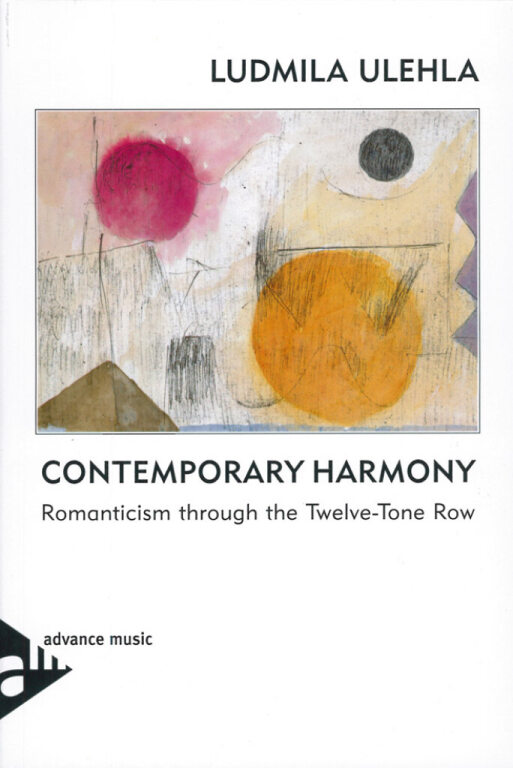Ulehla, Ludmila: Contemporary Harmony
sheet music
Vsebina | ||
|---|---|---|
| 1. | Part I: Musical influences present in 1900 | |
| 2. | Chapter 1: Rhythmic and melodic structure | |
| 3. | Chapter 2: Intervallic unity | |
| 4. | Chapter 3: Harmonic growth | |
| 5. | Chapter 4: Details concerning the ninth chord | |
| 6. | Chapter 5: Eleventh and thirteenth chords | |
| 7. | Chapter 6: Leading-tone chord | |
| 8. | Chapter 7: Modern application | |
| 9. | Part II: Impressionism | |
| 10. | Chapter 8: Modal influence | |
| 11. | Chapter 9: Influence of modes on harmony | |
| 12. | Chapter 10: Unrestricted melodic movement of all chord members | |
| 13. | Chapter 11: The tritone, the whole-tone scale, and whole-tone dominants | |
| 14. | Part III: The Rise of Modern Dissonance | |
| 15. | Chapter 12: Free counterpoint and the twelve-tone scale | |
| 16. | Chapter 13: Bichordal writing and polytonality | |
| 17. | Part IV: Contrapuntal Writing | |
| 18. | Chapter 14: Linear Roots | |
| 19. | Chapter 15: Two-part writing | |
| 20. | Chapter 16: Intervallic structures in the writing of three or more parts | |
| 21. | Part V: Intervallic Structures in Homophonic Textures | |
| 22. | Chapter 17: Fourth chords and perfect fifths | |
| 23. | Chapter 18: Intervallic structures emanating from bass intervals of sixths, thirds, sevenths, and seconds | |
| 24. | Chapter 19: The control of dissonance | |
| 25. | Part VI: The Twelve-Tone Row | |
| 26. | Chapter 20: Its strict application | |
| 27. | Chapter 21: Atonality | |
| 28. | Chapter 22: A summary of procedures for contemporary Analysis | |
| 29. | Acknowledgments | |
| 30. | Index of Musical examples | |
 Deutsch
Deutsch English
English Español
Español Français
Français Magyar
Magyar Polski
Polski Română
Română Slovenský
Slovenský 中文
中文